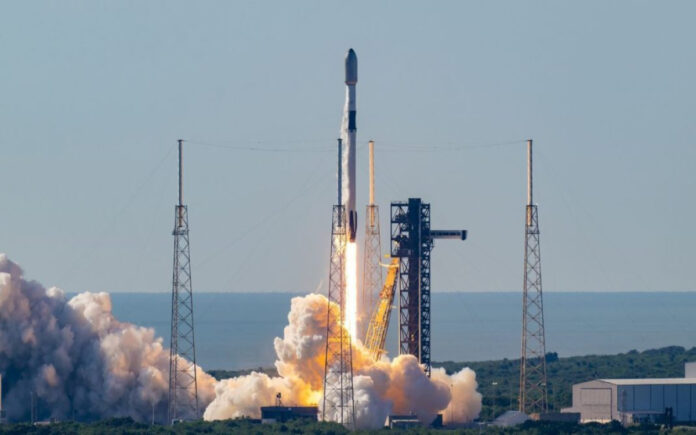Tehran: On Saturday, Iran successfully placed a research satellite into orbit using a rocket developed by the paramilitary Revolutionary Guard, according to the state-run IRNA news agency.
The Chamran-1 satellite, which weighs 60 kilograms, achieved a 550-kilometer orbit. Its primary mission is to test space hardware and software. IRNA reported that ground stations have successfully received signals from the satellite. The satellite was launched aboard the Qaem-100 rocket, designed and built by the Guard’s aerospace division, which employs solid fuel. Iran has announced plans for 13 additional satellite launches.
This launch marks Iran’s second of the year, occurring under President Masoud Pezeshkian, who succeeded Ebrahim Raisi following his death in a helicopter crash in May. Earlier in January, Iran claimed to have successfully launched three satellites into space using a different rocket.
Western Concerns Over Iran’s Satellite Program
Western nations view Iran’s space program with suspicion, interpreting it as a potential cover for enhancing ballistic missile capabilities. The US military has raised concerns that Iran could repurpose its satellite launch technology for long-range weapon development, including nuclear warheads. The military argues that the technology used to deploy satellites could also be adapted for long-range missile launches.
Iran strongly denies these allegations, asserting that its space activities are solely for scientific purposes and that it has no intention of developing nuclear weapons. The Iranian government has consistently maintained that its space program is civilian in nature and not a front for ballistic missile development.
The United States has previously argued that Iran’s satellite launches contravene a UN Security Council resolution and has urged Tehran to cease any activities involving ballistic missiles capable of delivering nuclear weapons. However, UN sanctions on Iran’s ballistic missile program expired last October.
Also Read | China’s Latest Fighter Jet Makes Debut on Aircraft Carrier Liaoning
Space Program Developments
Under former President Hassan Rouhani, Iran’s space program was scaled back to ease tensions with the West. President Raisi, who took office in 2021, accelerated the program before his untimely death. The new president, Masoud Pezeshkian, has yet to clarify his stance on the space initiative.
US intelligence agencies have warned that Iran’s advancements in satellite launch technology could potentially shorten the timeline for developing intercontinental ballistic missiles (ICBMs), which could deliver nuclear weapons. Despite Iran’s denials, international agencies believe the country maintained a military nuclear program until 2003.
Also Read | NATO Could Have Done More to Prevent Ukraine War, Says Stoltenberg
Although Iran possesses one of the most extensive missile programs in the Middle East, it has faced several unsuccessful satellite launches in recent years due to technical issues. The latest launch also comes amid heightened regional tensions, particularly related to Israel’s ongoing conflict with Hamas in the Gaza Strip, raising concerns about the potential for broader regional conflict.



